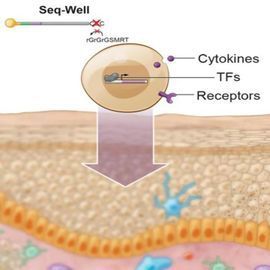The field of genomics has revolutionized medical and biological research over the past decades. Understanding the intricate details of cells and their genetic makeup can provide us with incredible insights into various diseases and other biological processes. However, traditional sequencing methods often involve a large sample size, which can lead to masking of genetic variations and environmental influences. Furthermore, single-cell sequencing can be an arduous task due to the challenges of isolating a single cell from a larger population.

Fortunately, researchers at MIT have developed an innovative method for single-cell sequencing, which involves capturing droplets in polyacrylamide beads while allowing harsh lysis conditions. This method, known as PCR bead sequencing or Epic-PCR, has opened doors to mass single-cell sequencing that can help researchers gain a deeper and more precise understanding of cellular processes and diseases.
PCR bead sequencing works by first encapsulating single cells within small droplets. These droplets are then isolated in polyacrylamide beads, which provide a protective layer for the cell and allow harsh lysis conditions to be applied without damaging the genetic material. A specific primer is then used to amplify the bacterial genome within each bead and the resulting DNA fragments are brought together into a single, contiguous sequence. These concatenated sequences are then sequenced using advanced sequencing technologies to analyze both the phylogeny and function of each bacterial genome.
One of the biggest advantages of PCR bead sequencing is its ability to analyze individual cells, providing researchers with a more comprehensive understanding of genetic variations and complex biological processes. This method also allows for the simultaneous analysis of multiple cells, making it much faster than traditional single-cell sequencing methods.
PCR bead sequencing has already showed promising results, particularly in microbial research. For instance, a recent study by researchers at the University of California, Berkeley used PCR bead sequencing to analyze the genomes of hundreds of individual algae cells. The researchers were able to identify enzymes involved in the biosynthesis of pigments, which are required for photosynthesis.
Another benefit of PCR bead sequencing is its potential for use in clinical research. The ability to analyze individual cells at high resolution and in large numbers could significantly enhance our understanding of various diseases such as cancer, where genetic variation plays a huge role.
In conclusion, PCR bead sequencing is a revolutionary method for single-cell sequencing that could change the way we study genetics and cellular biology. This technology has immense potential for a variety of applications, from microbial research to clinical diagnostics. As this technology continues to evolve, it could provide us with unprecedented insights into the genetic makeup of cells and dramatically improve our ability to diagnose and treat diseases.